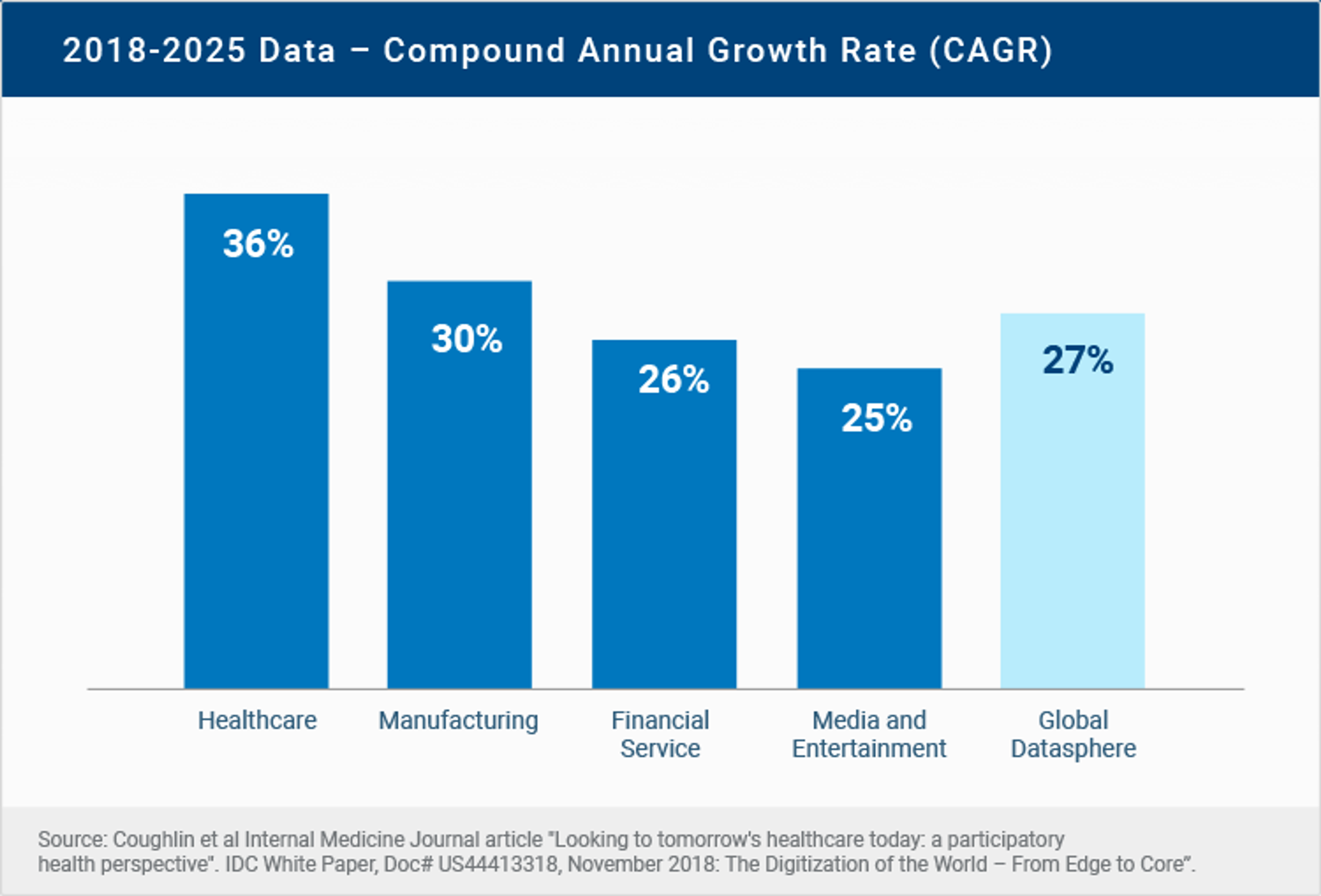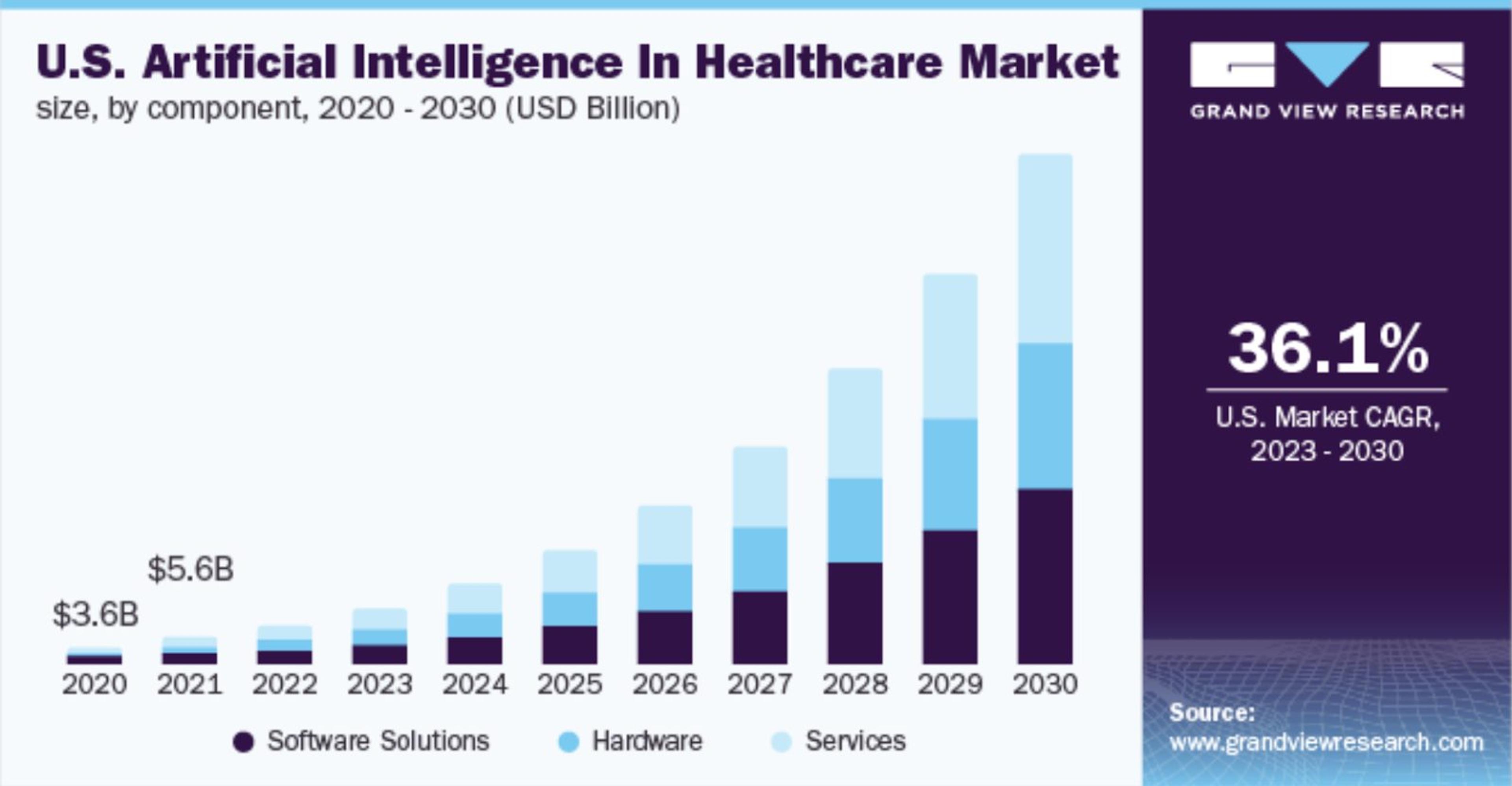blog
The A to Z Guide to Healthcare Data Orchestration

SECTIONS
The healthcare industry generates a staggering one-third of all the world’s data. To operate at the speed and scale demanded by modern healthcare landscapes and ensure optimal patient care, organizations need a way to manage this data effectively. Healthcare data orchestration is the structured and organized process by which they achieve this.
In short, healthcare data orchestration centralizes and streamlines data so it can be used by stakeholders in every part of an organization and ecosystem. In practice, it requires specific steps and technologies to support its implementation and ongoing success.
In this guide, we’ll define healthcare data orchestration in detail, explore the technologies behind it, and explain how you can create an implementation plan that lays the foundation for long-term success.
Key Takeaways:
- Healthcare data volume is growing faster than any other industry, and the need for healthcare data orchestration is critical for organizations to keep up.
- Having a singular, highly-integrated data management platform is the core of effective healthcare data orchestration.
- Key implementation steps and considerations include data infrastructure mapping, compliance and governance, and continuous quality management.
- Healthcare data orchestration delivers significant benefits at the patient, organization, and industry levels. It enhances operations, care quality, research, policy, and more.
What is Healthcare Data Orchestration?
Healthcare data orchestration is the strategic integration and management of healthcare data from various sources and systems. This process involves collecting, harmonizing, and utilizing data in order to streamline operations, improve patient care, and enhance decision-making capabilities.
As healthcare data volume continues to grow faster and higher than any other industry, it’s becoming a more essential part of every organization’s modern data management strategy.

Image Source
In practice, healthcare data orchestration makes data actionable, enabling employees and stakeholders to use it in diverse—but also coordinated—ways.
By effectively orchestrating data, healthcare providers gain a more comprehensive view of a patient’s or population’s health that can lead to more informed decisions. Data can be integrated from the variety of courses healthcare organizations use to deliver a holistic profile. These sources include:
- Electronic health records (EHRs)
- Lab results and imaging data
- Patient-reported outcomes
- Wearable device data
- Telehealth consultation records
- Pharmacy records
- Insurance claims and billing information
- External data providers
Integration of these sources with effective healthcare data orchestration is crucial for accurate diagnosis, effective treatment planning, and monitoring patient progress.
Furthermore, healthcare data orchestration supports population health management by identifying trends, managing outbreaks, and implementing preventive care strategies. It also plays a significant role in research and development, where aggregated and harmonized data often leads to new medical insights and innovations.
The Role of AI in Data Orchestration
Cutting-edge technologies like artificial intelligence (AI), machine learning (ML), and advanced analytics play a central role in healthcare data orchestration. These technologies are reshaping data management in general—healthcare industry included—by enhancing the ability to analyze, interpret, and utilize vast amounts of data efficiently and effectively.
AI and ML are particularly adept at handling complex data types such as genetic sequences, medical images, and electronic health records. They process these multifaceted datasets swiftly and accurately, offering faster ways to process data, accelerate computations, and save time and resources.
For instance: AI-driven predictive analytics aids in early disease detection and prognosis by analyzing patient data to forecast the risk of specific chronic diseases. This enables early interventions and highly personalized prevention strategies.
AI-driven image analysis can do things like deliver precisely outlined tumor boundaries for oncological treatment, or provide advanced image analysis to help develop treatment plans for conditions like brain tumors or strokes. For patients using wearables to monitor chronic conditions, analytics technology can quickly pinpoint an abnormality to trigger timely interventions and adjustments.
As it relates to operational efficiency, AI-powered data analytics powers smoother workflows, scheduling, and supply chain optimization, leading to more efficient resource allocation and logistics. In public health and epidemiology, it enables efficient contact tracing, sentiment analysis for precise data dissemination, and genomic surveillance. Real-time data analysis aids public health agencies in responding quickly to emerging health threats.
These wide-ranging applications and data sources all lead back to effective healthcare data orchestration, through which data from all of these sources is structured and managed centrally to power decisions.
This capability is becoming a competitive imperative in the healthcare industry—the adoption of AI software, hardware, and service solutions to power data orchestration and related data-driven processes is projected to grow rapidly for the foreseeable future.

Image Source
Essential Steps for Implementing a Healthcare Data Orchestration Plan
Data management is complex by nature, and becoming increasingly so. To implement a plan for effective healthcare data orchestration, it’s essential to start with foundational steps that lay the groundwork for a strategy that’s scalable, adaptable, secure, and compliant. These steps include:
1. Develop a Comprehensive Data Strategy
Start by crafting a data strategy that clearly outlines your healthcare organization’s goals regarding data collection, management, and utilization. Your strategy should identify the specific types of data to be collected and define how this data will be used to improve patient care, enhance operational efficiency, and inform strategic decisions.
Your strategy should also align with the overall goals of the healthcare organization and consider factors like data sources, storage needs, security requirements, and compliance with healthcare regulations.
2. Adopt a Centralized Data Platform
Implement a centralized data platform to serve as the core for all data-related activities. Your platform should be capable of handling many types of healthcare data, from patient records to administrative information. It needs to be scalable to accommodate growing data volumes and flexible enough to adapt to changing strategic needs.
Your platform should also offer robust data storage, processing capabilities, and support for analytics. By centralizing data, you can ensure a unified view of information, which is crucial for effective data analysis and decision-making.
3. Establish Robust Integration and Interoperability
Focus on ensuring that your data platform can seamlessly integrate with various healthcare IT systems and support interoperability. This involves creating interfaces and protocols that allow different systems, such as EHRs, diagnostic tools, and billing software, to communicate and exchange data efficiently.
Achieving interoperability is key to breaking down data silos, enabling a comprehensive view of patient health, and facilitating coordinated care. It also ensures that data from various sources can be combined and analyzed effectively, providing deeper insights.
4. Map Your Data Infrastructure
Mapping your data infrastructure involves creating a detailed blueprint of how data flows within your organization. This includes identifying all data sources, understanding how data is collected, processed, and stored, and determining the pathways through which data travels.
Mapping helps identify potential bottlenecks, inefficiencies, or security vulnerabilities in your data flow. It also aids in planning for scalability and future integration needs. A well-mapped data infrastructure is essential for efficient data orchestration and ensuring that data is accessible and usable where and when it’s needed.
5. Ensure Compliance and Data Governance
Implement strict data governance policies and ensure compliance with healthcare regulations such as HIPAA. This step requires establishing protocols for data privacy, security, and quality control. Set up a governance framework that defines roles, responsibilities, and processes for managing and protecting data. Train staff regularly on data handling and compliance.
6. Implement Continuous Data Quality Management Processes
Establish ongoing processes for data quality management to ensure long-term accuracy, completeness, and reliability of the data in your system. This includes regular data cleaning, validation, and updating routines. Implement tools and technologies that can automate processes and provide alerts for potential data quality issues.
Continuous data quality management is vital for maintaining the integrity of your data, which is essential for accurate analytics, reporting, and decision-making in healthcare.
Putting it All Together
At its core, healthcare data orchestration means taking the vast and diverse data that your organization processes, and creating an intentional, structured strategy to manage it. Equipped with technologies like AI-powered analytics and automation, companies can do this at a greater scale than ever before.
Going forward, healthcare organizations can expect to see technologies (and thus demands for better data orchestration) advance at a rapid pace. And while the resources and investment required to keep up can be sizable, the impacts are significant: greater operational efficiency, more personalized patient care, stronger patient outcomes, enhanced research, and more.
Gaine provides ecosystem-wide master data management (MDM) solutions specifically designed for the unique challenges of the healthcare and life sciences industries. We help organizations power healthcare data orchestration with a single source of data truth to inform operations, strategy, and care delivery.
Learn more here about how Gaine can help you transform your data management strategy today.
